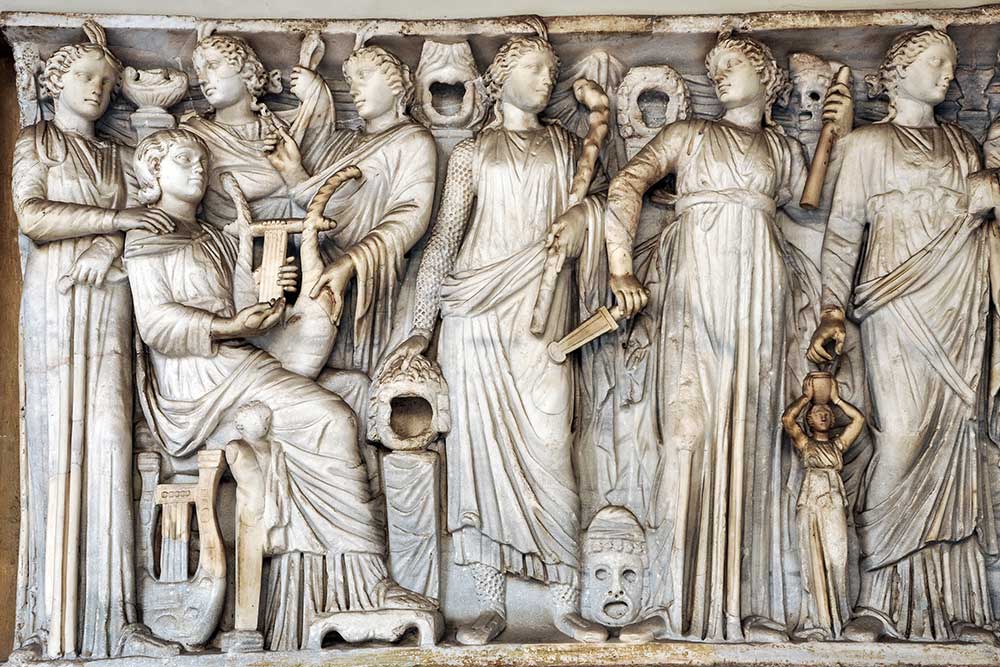Introduction
This essay examines the significance of Emperor Nero and his opulent palace, the Domus Aurea, in understanding Roman households and the broader societal structure of Ancient Rome. Constructed after the devastating fire of 64 CE, the Domus Aurea (Golden House) stands as a symbol of imperial excess and Nero’s controversial reign (54-68 CE). By analyzing this architectural marvel alongside Nero’s personal rule, the essay explores how domestic spaces reflected social hierarchies, power dynamics, and cultural values in Roman society. The discussion will focus on the contrast between elite and common households, the role of architecture in displaying status, and the implications of Nero’s reign for understanding imperial authority. Through this, a clearer picture of Roman societal structures will emerge, informed by historical evidence and scholarly interpretations.
The Domus Aurea as a Reflection of Elite Households
The Domus Aurea, sprawling across large parts of central Rome, epitomized the extravagance of elite Roman households. Unlike the typical domus (urban house) of the Roman upper class, which balanced functionality with modest displays of wealth, Nero’s palace was an unprecedented statement of luxury. Featuring vast gardens, artificial lakes, and rooms adorned with gold leaf and intricate frescoes, it covered over 100 acres (Ball, 2003). This scale and opulence sharply contrasted with the cramped insulae (apartment blocks) where most Romans lived, highlighting the vast disparities between social classes. Indeed, as Champlin (2003) argues, Nero’s home was less a private residence and more a public declaration of divine-like status, blurring the lines between household and empire.
Moreover, the Domus Aurea’s design reveals how elite households functioned as centers of political and social influence. The palace’s vast reception halls and banquet rooms were spaces for hosting powerful clients and displaying patronage, a key mechanism of Roman societal organization. Such spaces reinforced the patron-client system, where loyalty and favors underpinned social order (Wallace-Hadrill, 1994). Thus, Nero’s household, though exceptional in grandeur, mirrors how elite Roman homes were tools for maintaining hierarchical relationships.
Nero’s Reign and Societal Implications
Nero’s personal rule further illuminates the societal structures of Ancient Rome through his manipulation of domestic and imperial power. His infamous reputation—whether deserved or exaggerated by later historians like Suetonius and Tacitus—paints him as a tyrant who prioritized personal indulgence over public welfare (Griffin, 1984). The construction of the Domus Aurea, funded by heavy taxation and land confiscation, sparked resentment among the Roman populace, reflecting tensions between imperial authority and societal expectations. This suggests that while emperors held near-absolute power, their domestic choices could influence public perception and political stability.
Furthermore, Nero’s household, including his treatment of family and courtiers, underscores the patriarchal and often brutal nature of Roman social structures. His alleged involvement in the deaths of relatives, such as his mother Agrippina, reveals how personal and political spheres intertwined in elite households (Griffin, 1984). This dynamic was not unique to Nero; it reflected broader Roman values where familial authority mirrored state control, with the paterfamilias wielding immense power over dependents (Wallace-Hadrill, 1994). Therefore, Nero’s actions, while extreme, offer insight into the normalized hierarchies within Roman society.
Contrasts with Common Roman Households
While the Domus Aurea represents the pinnacle of elite living, it also casts light on the starkly different realities of common Roman households. Most urban Romans lived in insulae, multi-story tenements that were often poorly built and overcrowded (Ball, 2003). These spaces lacked the privacy and amenities of elite homes, illustrating a society deeply divided by wealth and status. The contrast between Nero’s palace and these modest dwellings highlights how domestic environments reinforced social stratification, with physical space serving as a visible marker of one’s place in the hierarchy.
Additionally, the cultural emphasis on public display in elite households, as seen in the Domus Aurea, was absent for the lower classes, who prioritized survival over ostentation. This disparity arguably fueled social tensions, as evidenced by contemporary accounts of unrest during Nero’s reign (Champlin, 2003). Thus, studying Nero’s palace alongside common households reveals not only architectural differences but also the underlying inequities that shaped Roman life.
Conclusion
In conclusion, Nero and the Domus Aurea provide valuable insights into Roman households and societal structures. The palace’s extravagance illustrates how elite domestic spaces were extensions of political power and social status, reinforcing hierarchical relationships through architecture and patronage. Nero’s controversial reign further highlights the intersection of personal and imperial authority, reflecting broader Roman values of control and patriarchy. By contrasting the Domus Aurea with common households, the profound social inequalities of Ancient Rome become evident, with domestic environments underscoring class divisions. Ultimately, this analysis suggests that studying individual figures like Nero and their households offers a window into the complex interplay of power, culture, and inequality in Roman society, inviting further exploration of how personal spaces shaped public life.
References
- Ball, L. F. (2003) The Domus Aurea and the Roman Architectural Revolution. Cambridge University Press.
- Champlin, E. (2003) Nero. Harvard University Press.
- Griffin, M. T. (1984) Nero: The End of a Dynasty. Batsford.
- Wallace-Hadrill, A. (1994) Houses and Society in Pompeii and Herculaneum. Princeton University Press.


